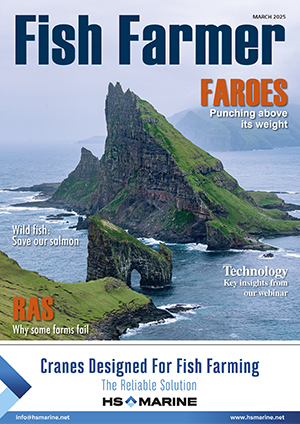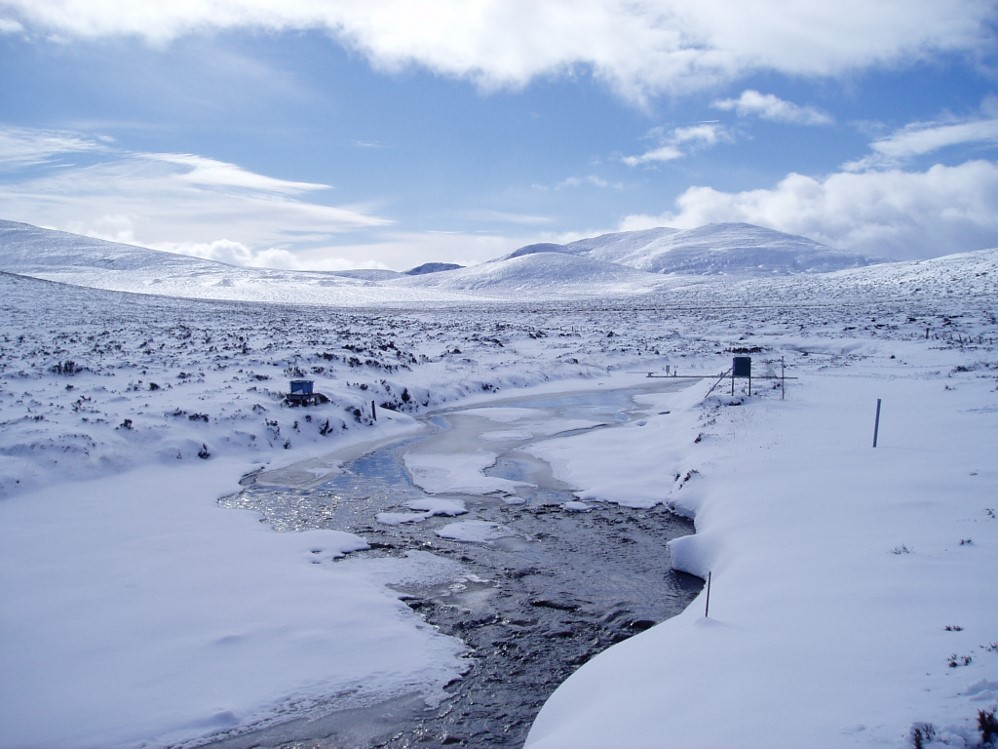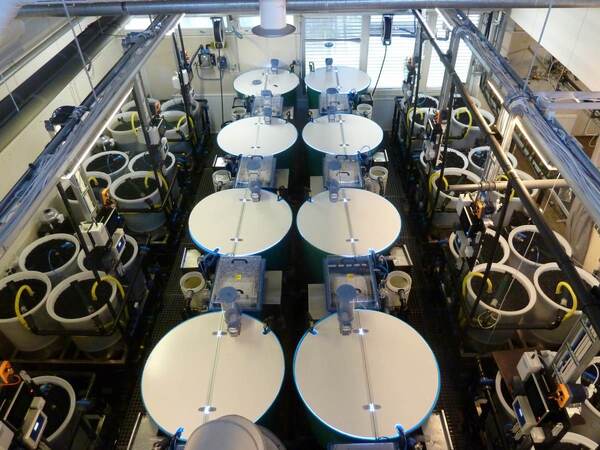Triple solution

Growing shrimp, oysters and seaweed together creates a natural balance, a study by the University of New Hampshire has found.
Scientists with the University of New Hampshire (UNH) College of Life Sciences and Agriculture (COLSA) and the School of Marine Science and Ocean Engineering are studying how integrated multi-trophic aquaculture (IMTA) – systems in which two or more organisms are farmed together – could make shrimp farming more sustainable, as well as potentially support the growth of this industry in the US.
Driven largely by demand in developed countries, shrimp farming has grown rapidly in subtropical and tropical parts of Asia and the Americas. However, shrimp farming also has significant environmental impacts, including increased ammonium levels that cause algal blooms and oxygen-depleted dead zones.
[caption id="attachment_163849" align="alignnone" width="224"] Shrimp in tank[/caption]
“Much of the shrimp we consume comes from overseas, where they don’t need to follow the same environmental regulations as we do here in the US,” explains Elizabeth (Lizzy) Martin, a graduate student in the marine biology programme at COLSA. “And shrimp is also one of the highest valued seafood imports for the US, so developing a local industry would help reduce reliance on these overseas markets.”
As part of her research, Martin is studying IMTA systems that pair farmed shrimp (Pacific white leg shrimp, L.vannamei) with water-filtering species, like oysters, to determine if the grouping will cut down on the amount of ammonia – a form of nitrogen – and phosphorus that remain in the water as part of the farming process. Shrimp produce ammonia naturally.
Additionally, other ammonia contributors include shrimp feed, which is often high in nitrogen, and the natural decomposition of the shrimp feed, dead organisms, faeces and other materials found within the large artificial ponds that shrimp are commonly raised in. This “pond” water is then discharged into the surrounding environment, resulting in the affluent entering waterways and, in the US, potentially violating regulations like the US Environmental Protection Agency’s Clean Water Act.
[caption id="attachment_163850" align="alignnone" width="224"] Racks in the lab[/caption]
In natural environments, water-filtering species, like shellfish, help clean the water of the excess nutrients. Martin tested to see whether a similar method could be used in more of a closed farming system, in which native oysters and non-native red seaweed could grow alongside Pacific white shrimp, offering the dual advantage of cleaning the water and providing an additional income source to aquaculturists (fish farmers).
“We had three treatments — shrimp with the seaweed, shrimp with the seaweed and an oxygenator and shrimp with the seaweed and oysters,” says Martin, who conducted her experiment at the UNH Coastal Marine Lab in New Castle, New Hampshire. “And what we found was that the final treatment, the shrimp with the seaweed, which absorbs and stores nitrogen, and the oysters resulted in a reduced level of nitrogen (including ammonia, nitrite and nitrate) over time.”
What Martin found was that the oysters help control the production of nitrogen better, resulting in significantly lower amounts over a 30-day window when compared to the other two treatments. This method not only has the potential to grow shrimp sustainably but also offers additional benefits, such as producing marketable products like seaweed and oysters. These products can diversify the revenue streams for aquaculture farms while contributing positively to the environment.
[caption id="attachment_163851" align="alignnone" width="300"] Several shrimp in tank[/caption]
In this case the seaweed concerned was Gracilaria, a type of red algae also known as Irish moss. Gracilaria’s commercial uses include as a culinary ingredient – in Japan it is known as ogonori – as well as a feed source for aquarium-kept fish and an ingredient for making agar.
And while the implementation of such systems faces challenges, including regulatory issues and environmental concerns unique to the US, compared to traditional shrimp farming practices in Asia, the study provides a pathway for more sustainable practices that could be adopted widely, including in New England where UNH is based.
[caption id="attachment_163852" align="alignnone" width="300"] Irish moss seaweed[/caption]
The School of Marine Science and Ocean Engineering (SMSOE) is the University of New Hampshire’s first interdisciplinary school, designed to address today’s highly complex ocean and coastal challenges through integrated graduate education, research and engagement. As such, it serves as an interdisciplinary nexus for marine science and ocean engineering teaching and research across the university.
“Lizzy’s research is significant as it demonstrates a novel IMTA approach to culture shrimp in a closed recirculating aquaculture system,” says Michael Chambers, Research Associate Professor with the UNH School of Marine Science and Ocean Engineering and Martin’s graduate advisor. “In this manner, shrimp could be grown inside a barn, greenhouse or even a basement to provide fresh seafood to local restaurants at a premium price.”
He adds: “The study was aimed mostly for shrimp recirculating systems but it could definitely be used in a pond.”



Farm Technician (Torridon) - Mowi Scotland
Torridon£27,236 to £30,504 per annum
Farm Technician (Rum) - Mowi Scotland
Small Isles£27,236 to £30,504 per annum
Deeckhand (Lochlannach) - Mowi Scotland
Skye & Lochalsh£27,236 to £30,504 per annum
Marine Operative - Bakkafrost Scotland Limited
IV54 8XH£25,501.14 to £34,472.50 per annum
Temporary Harvest Technician (Nightshift) - Mowi Scotland
LochaberFrom £30,504 per annum




